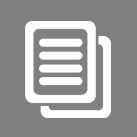Assessment in secondary arts is complicated because it is easy to get caught up in assessing the performance-based tasks instead of taking a balanced approach with emphasis on the process. We took one arts classroom (music) and used technology to document and provide feedback while empowering students to self-assess their growth around the creative process (from arts curriculum front matter). Seesaw (a multimedia ePortfolio) was used by students to capture their growth and work while the teacher documented observations and conversations with students throughout the semester using a Google Form and Drive. Feedback and assessment was descriptive (no marks) until reporting periods at which time students self-assessed and conferenced with the teacher to determine a grade.
This work has been shared with others through a blog and through the sharing of resources (assessment tools such as rubrics), and by inviting 16 other teachers to learn from our journey in the spring of 2017.
Team Members
Jaclyn Calder
Simcoe County District School Board
Amanda Clarke
Simcoe County District School Board
Professional Learning Goals
- Empowered students to self-assess their growth within the creative process
- Supported students in documenting their growth using technology to create an ePortfolio
- Supported students in reflecting on their work
- Documented observations and conversations (triangulation of assessment) with students using technology
Activities and Resources
The team started by exploring resources (listed in the Resources section below) and connecting with professional learning networks (Twitter, blogs and Facebook) to gather perspectives around transforming assessment to going “gradeless.” Once we had analyzed how other teachers were removing the focus from grades to emphasize self-assessment, we created a set of assessment tools to be used in the music class. Using the curriculum document, we took the overall expectations to create the big ideas for the course. We then used the achievement chart to create criteria for each big idea. Lastly, student surveys and parent letters were created in addition to digital tools to collect evidence and artifacts of learning.
Once these tools were created, the music teacher introduced the concept to classes and we then met after the first few weeks to revise and refresh plans. Throughout the semester, students documented their learning using an ePortfolio (Seesaw in this case). The teacher documented observations and conversations using a Google Form and docAppender to create a document of observations for each student.
At midterm, the teacher brought in a supply teacher to cover the classes while she had conferences with each student to determine report grades and comments. Part of the process at reporting times is that students complete a “course learning profile” where they connect the evidence they’ve collected to the big ideas for the course.
In the spring of 2017, the teacher facilitated professional development for 17 secondary teachers who were interested in trying this in their classrooms. These teachers were from a variety of disciplines including math, science, art, technology, physical education, social science, and Canada and world studies.
Unexpected Challenges
Keeping up with sharing and blogging was very difficult for a classroom teacher.
Enhancing Student Learning and Development
The project definitely focused students on the learning and improving opposed to “getting marks.” Students can have conversations about their learning. This project also provided a way to differentiate learning for students with varying musical backgrounds and playing different instruments. They used goal getter tickets to plan their personal goals for learning.
Sharing
We blogged about the experience at https://ajclarkeedu.blogspot.ca/ . All assessment tools and resources that were created have been shared here as well.
In the spring, we ran a series of professional learning days for teachers and 16 teachers joined in. We used release time from this project and some release days through another initiative in our school board.
Project Evaluation
This project was definitely a success. We needed the release time and team support to navigate and find the best way to support students in focusing on learning opposed to grades. The conversation in class is now focused entirely on learning and personal growth. Students can articulate what they can already do well and what their next steps are.
Resources Used
Teaching Students to Self-Assess: How do I help students reflect and grow as learners? by Starr Sackstein
https://www.amazon.ca/gp/product/B017OG0FI4/ref=oh_aui_d_detailpage_o01_?ie=UTF8&psc=1
Hacking Assessment: 10 Ways to Go Gradeless in a Traditional Grades School by Starr Sackstein
https://www.amazon.ca/gp/product/B019AJPLVE/ref=oh_aui_d_detailpage_o02_?ie=UTF8&psc=1
Julie Balen, Ontario Educator
Resources Created
These resources will open in your browser in a new tab, or be downloaded to your computer.



